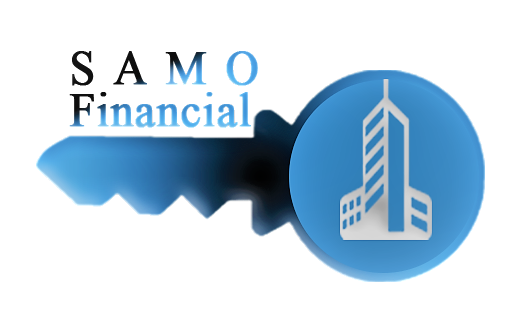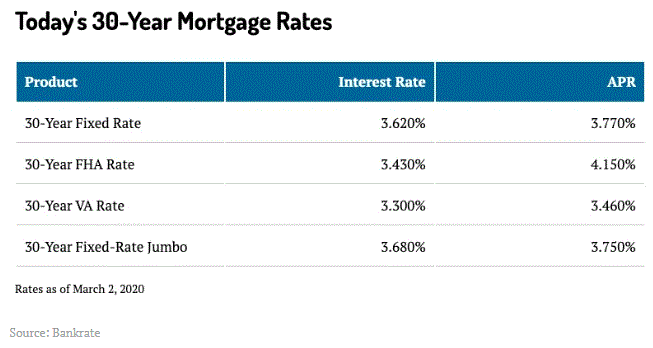Guest Post: Best Mortgage Refinance of 2020
Guest Post: Is it a good time to refinance your mortgage?
While this is not a common theme for us to talk about mortgage refinancing, we thought it may be useful for some of our readers and hence sharing an article written by Ian Salisbury of Money.
News Update: On March 16th, the fed announced a second rate cut in as many weeks, lowering interest rates to near zero amid fears of the coronavirus spreading. There has been a spike in refinance applications with mortgage rates at historic lows.
If you’re a homeowner looking for ways to lower your monthly expenses, one of the alternatives you may be considering is refinancing your home. Interest rates are very low, and reducing your rate on a large loan like a mortgage can result in significant savings.
Refinancing your mortgage simply means you’re replacing your current mortgage loan with a new one. Although lowering interest rates to improve cash flow is one of the main reasons homeowners choose to refinance, other reasons include changing the loan’s term, switching from an adjustable-rate to a fixed-rate loan, switching from an FHA backed loan to a conventional loan, or tapping into the equity in your home to finance projects like making needed repairs.
Should I Refinance?
Your first step in considering whether to refinance or not is to determine what you hope to achieve – for example obtaining a lower monthly payment (thereby improving your cash-flow) or going for a long-term savings on interest. “You need to look at your goals in reference against interest rates, costs and your expected ownership time frame in order to see if you can actually achieve your goal,” says Keith Gumbinger, Vice President of hsh.com, an online consumer mortgage resource. He goes on to caution that many homeowners looking to save money by refinancing with a better rate for a lower monthly payment might actually end up paying more over the full term of the loan.
There are typically fees and closing costs associated with refinancing your loan. Though a mortgage refinance may offer a lower interest rate, consumers must factor in these fees and costs in order to determine whether or not refinancing makes financial sense over the life of the loan. Other considerations when evaluating whether to refinance include how much equity you have in your home, the amount of interest you have already paid, and how long you have left on the original mortgage.
Important Things To Know About Mortgage Refinancing:
Just as being informed and prepared can help you find the best rates on primary mortgages, becoming familiar with the mortgage refinance market can help you find the best alternative for your particular situation. The following are some of the more important issues you should be aware of when refinancing.
Mortgage refinancing could extend the length of your loan.
When you replace your mortgage loan with a new one via refinancing and you choose the same term, you could be agreeing to make mortgage payments for a longer period of time. For example, if you’re five years into a 30-year mortgage and then refinance into a new 30-year mortgage, you reset the clock and now have a new loan for 30 years (not 25). However, this could be a good financial move if the interest rate is such that you’re spending less money over the course of the new loan than you would have if you’d continued with the old one. Additionally, you could always elect to make voluntary prepayments if you are financially able and your lending institution does not charge penalties for doing so. This will shorten the term of the refinance.
There are costs and fees associated with refinancing a mortgage.
You’ll likely have to pay for an appraisal, credit check, origination fees, title company fees, closing fees, and more. These fees, on average, are 2% to 4% of the total loan amount. Take these into consideration when deciding if refinancing is right for you. To get an idea of the types of fees and related costs you may be assuming when refinancing, look at the documentation for your existing loan. These fees can usually be found in the document called “Closing Disclosure” (for loans originated prior to 2015 the form is called the “Settlement Statement”). It will give you a good idea of what these costs could be. You should also ask your refinancer for a list of fees. If there’s something on the list you don’t understand, ask for clarification. If you don’t get a clear answer, it may be time to look for another lender.
When evaluating closing costs, you also want to see what your break-even point will be. If your closing costs are $5,000, and your monthly savings on mortgage payments are $100.00, it will take a little over four years (50 months) to recoup those costs or break even, so your savings won’t start until after you’ve reached this point. While this time period is standard for original mortgages, the preferred break-even point in refinancing should be about two years (or less). If you plan on selling your home before your break-even point, the refinance will cost you money instead of saving it.
There are companies that offer zero closing cost options for those who don’t have the cash to pay them upfront. This doesn’t mean you won’t have to pay these costs, it just means you don’t have to have the money to pay for them in order to close. In this case, the closing costs are either built into the interest rate, meaning a higher rate and monthly payment, or added onto the principal at a lower interest rate, which may mean extending the term of your loan. You need to evaluate both of these options to see what works best for you if you go for zero closing costs.
If you like reading the article, you can continue reading it here.











